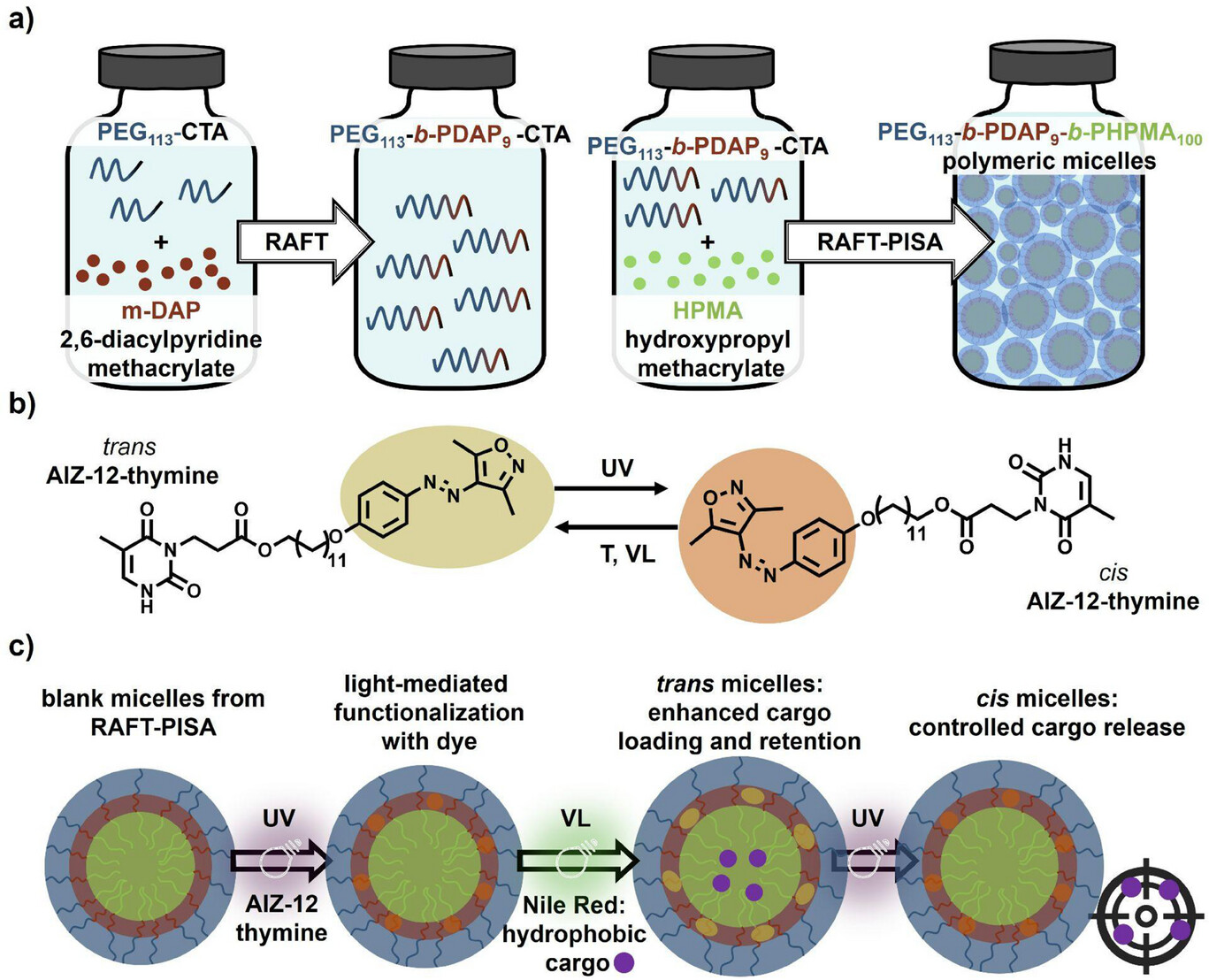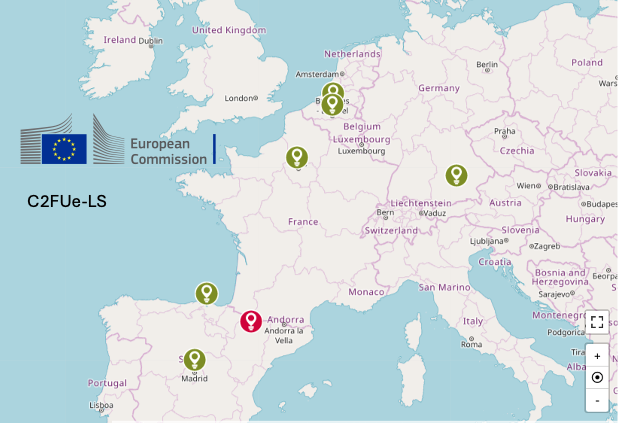Investigadores del grupo de Cristales Líquidos y Polímeros del INMA, en colaboración con la Universidad de Florencia, publican un nuevo trabajo conjunto en la prestigiosa revista Small, referente internacional en nanociencia y nanotecnología.
Esta contribución recién publicada presenta el desarrollo de nanotransportadores poliméricos sensibles a la luz, capaces de liberar su carga de manera controlada mediante irradiación. El estudio busca contribuir al desarrollo de sistemas de liberación de fármacos de alta precisión, en los que la luz funciona como estímulo externo y no invasivo.
El trabajo recoge los resultados obtenidos por Ruggero Rossi durante su estancia predoctoral en el INMA, que forman parte de su tesis doctoral defendida en la Universidad de Florencia, y refuerza la sólida colaboración entre ambos grupos.
«Light-mediated supramolecular functionalization of polymerization-induced self-assembled micelles»
Ruggero Rossi, Miriam Abad, Luis Oriol, Daniele Martella, Camilla Parmeggiani, Milagros Piñol
Small 2025, e11176
6th Nov. 2025
Abstract: Precise, remote control of polymeric nanoparticles via external stimuli is a key aim for the next-generation drug delivery. As a versatile, one-pot method, polymerization-induced self-assembly (PISA) produces dispersions of block-copolymer micelles at high solids content with tunable core–corona architectures. Light is an ideal trigger to control the uptake and delivery of specific molecules inside such micelles since it can be localized, and easily tuned in intensity and wavelength. In this study, PISA is employed in water to obtain micelles containing diacylaminopyridine units functionalizable thanks to supramolecular interaction by a light-mediated process. Indeed, only if UV irradiation is used to convert thymine-based azo photoswitches into the cis form, these molecules permeate the hydrophilic corona and anchor via hydrogen bonds to the hydrophobic core of the micelles. Subsequent visible‑light exposure regenerates their trans state without micelle disassembling. The photoswitch loading boosts the encapsulation of Nile Red, studied here as a model of hydrophobic cargo, while a subsequent UV light stimulus accelerates the dye release; moreover, the selected photoswitch sustains release over days without further irradiation. By marrying advanced polymerization techniques with reversible photochemistry, dynamic micelles are prepared whose structure and cargo release can be fully controlled by light.











